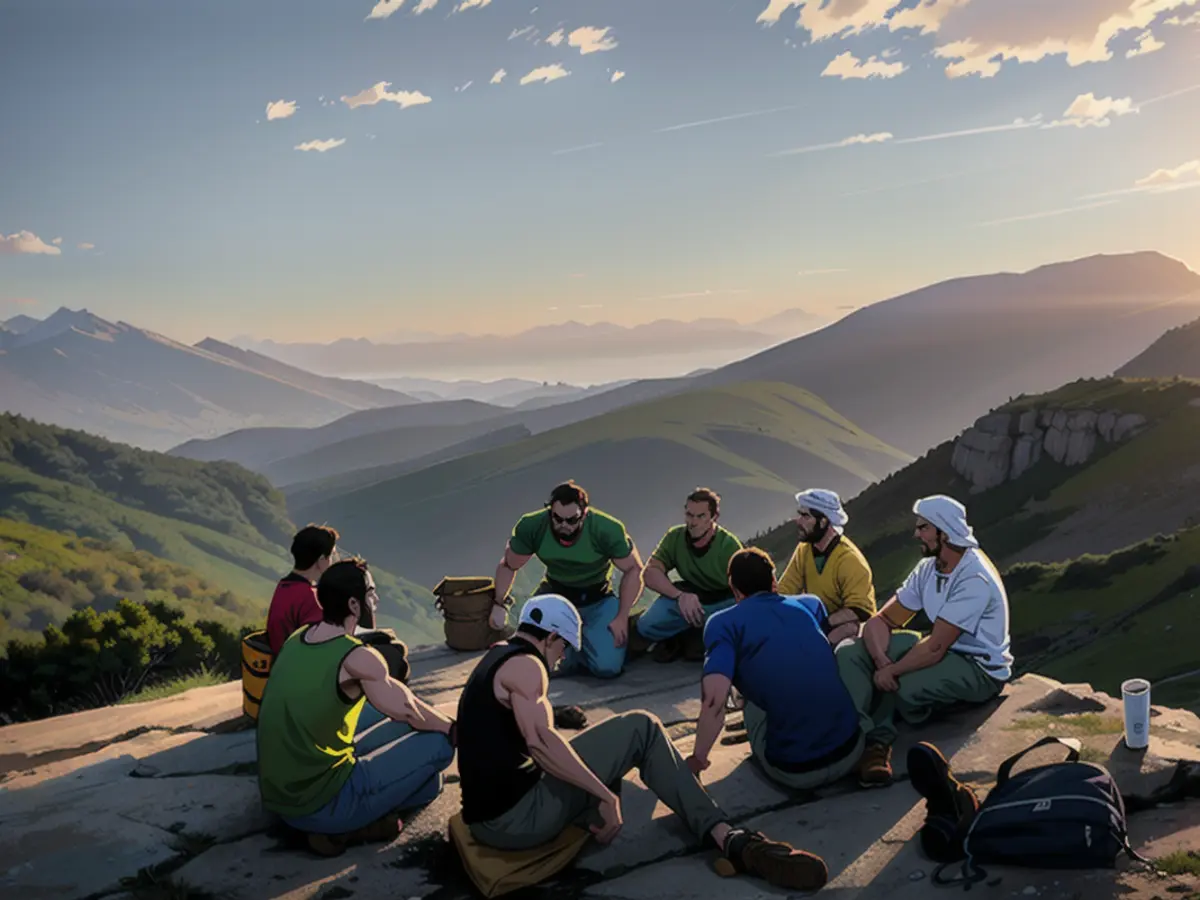An Irish community becomes a lawless state over its illegal spirit production.
This region is a treasure trove of attractions for travelers aiming for the northwestern parts of Ireland. There's Doagh Famine Village, where visitors can learn about the daily life of Irish people from the 1840s up until today, or revel in the chance to witness the aurora borealis.
Malin Head, the farthest point of the country, is a famous landmark with breathtaking views. Meanwhile, Glendowen Craft Shop in close-by Clonmany sells tweed clothing and accessories, which would make excellent souvenirs. The Urris valley is where you can find some of the best hiking routes on Lenan Beach and Tullagh Bay Beach, which is also a fantastic place to surf.
However, in the 19th century, this county became infamous for an illicit trade - poitín or Irish moonshine. Inishowen in particular, was the epicenter of this illegal activity, earning it the nickname "Urris Poitín Republic."
While everyone immediately associates Ireland with whiskey, poitín is Irish moonshine's more ancient cousin. Although there's little documentation on whiskey distilled in home pots from a mash of cereal, grain, and often potatoes, some claim it dates back to the first century, making it one of the oldest spirits in the world, if not the oldest.
Named after their homemade brew
It's known as "mountain dew" – yes, the soda shares its name with moonshine slang – and uisce beatha, or "water of life", a term also used for whiskey.
During the 17th century, when Ireland was under British rule, the authorities attempted to regulate poitín-making and impose taxes. It was no easy task to collect taxes from rural producers who'd been freely brewing for centuries, so the spirit was made illegal in 1661.
Instead of vanishing, poitín-brewing went underground, and the black market thrived. There are countless stories of these distillers, their craft, and their paraphernalia. One common tale shared in northwest Ireland today is about the island of Innis Murray, off Sligo's coast, which Martin Hegarty declared a kingdom and transformed into an outlaw distillery.
The crafty and elusive rural distiller was hard to catch, primarily working under the cover of night, making it even harder for them to be apprehended. Rewards were offered to locals who might report their neighbors, but it availed little. Hence, entire communities were targeted.
Forcing people to pay
"The authorities had to come up with a method to collect their taxes and eradicate the illegal distillation," explains Jennifer McLaughlin-Doherty, founder of Irish Ancestral Tours and Research, who hails from Urris and has a close connection to the short-lived era of the Poitín Republic of Urris. "They figured out that rather than fine individuals, they'd fine the entire townships. And, even if you weren't producing, you had to pay. And when that failed, they started charging the landlords. So the landlords then became responsible for policing."
The area's geographical distance was its strongest advantage. It was protected by a harbor on its west side. The counties of Croagh Carragh, Mamore, and Raghtin More mountains surround it, effectively isolating the area from the mainland. The only entrance point was through the Mamore Gap, a narrow passage between two cliffs.
Tired of the heavy fines, the people of Urris declared themselves the independent state of "Urris Republic of Poitín," sealed themselves off in 1812 by collapsing the pass, reports McLaughlin-Doherty.
This narrow pass was convenient for setting traps for policemen or soldiers trying to stop their crimes. They also provided refuge for people caught distilling in other areas. The townspeople could be self-sufficient, as they had their farmland and fishing, allowing the Urris Republic of Poitín to last for three years before it was ended in 1815.
"My grandmother told me tales from her grandmother about the British red coats flowing down the hills as if they were a sea of blood," says McLaughlin-Doherty. "Arrests were made, and even after the end of the Urris Republic of Poitín, there were still incidents of poitín being produced and consumed - both of which can cause social problems and life-threatening health risks such as methanol blindness."
During the 19th century, the Catholic Church played a major role in curbing the production of illegal poitín in Ireland. Patrick Doherty, owner of Doagh Famine Village, explains, "This devastated the community. There are no pleasant stories about poitín because it caused so much trouble. The church joined forces with the government and persuaded people that creating poitín was a sin. It's incredible to think, but this strategy seemed to be effective."
As time passed, Ireland began to accept its complex history with its oldest spirit. In 1971, legally distilled poitín for export was allowed, and it was sold at Ireland's Shannon and Dublin airports. The prohibition on the home market lasting over 330 years was eventually lifted in 1997. In 2008, poitín received an EU geographical indication, allowing it to be produced exclusively in Ireland. This provided a new impetus for the spirit.
Poitín's Resurgence in Ireland
Today, poitín is a growing industry in Ireland, fueled by enthusiasts who are reviving the spirit's reputation. According to Aengus King, Director of the Drinks Ireland business group, "Poitín is a small but thriving industry in Ireland, and its reputation continues to improve annually. To be considered an authentic poitín product, it must adhere to certain regulations outlined in a document; one key requirement is that the entire process of making poitín must take place on the island of Ireland using traditional methods and ingredients."
Aengus King adds that despite the ban being lifted, it took two decades for distilleries to embrace the forgotten spirit due to its notorious past. "In order to obtain a distillery license from the tax authorities, you must also receive approval as a poitín production facility. This is shared responsibility between the Revenue Commissioners and the Department of Agriculture. The spirit must be largely made from grain or cereals. There are very specific guidelines to ensure the category is produced traditionally."
In modern-day Ireland, poitín is experiencing a resurgence. It has become a trendy ingredient in cocktails where consumers seek a uniquely Irish twist. The spirit has come a long way, but it still hasn't stopped some people from making it illegally at home.
"I believe creating poitín illegally is an increasingly rare practice," Padraic Ó Griallais, founder and director at Micil Distillery in Galway, says. "There are several reasons some people persist in making it illicitly. We Irish enjoy being a bit rebellious. As poitín production was originally outlawed when we were under British rule, distilling it now feels like a form of social resistance for certain individuals."

Read also:
- Fear of escalation in the Middle East: US Secretary of State Blinken travels to the region again
- Government circles: US Secretary of State Blinken to travel to Middle East again
- Bridging days 2024: How you can double your vacation this year
- Germany has wanderlust: how tour operators and airlines are looking ahead to the next travel year
Source: edition.cnn.com








